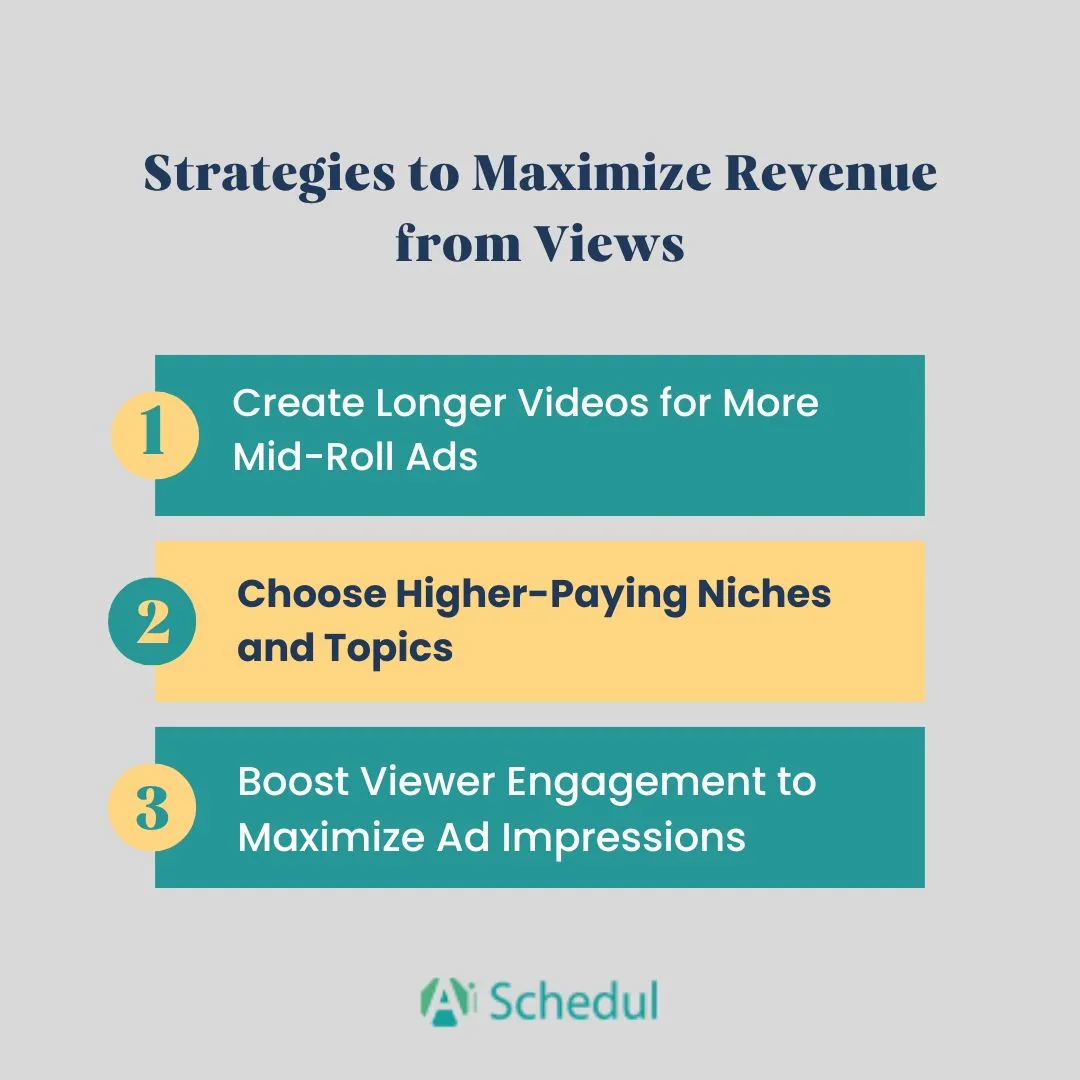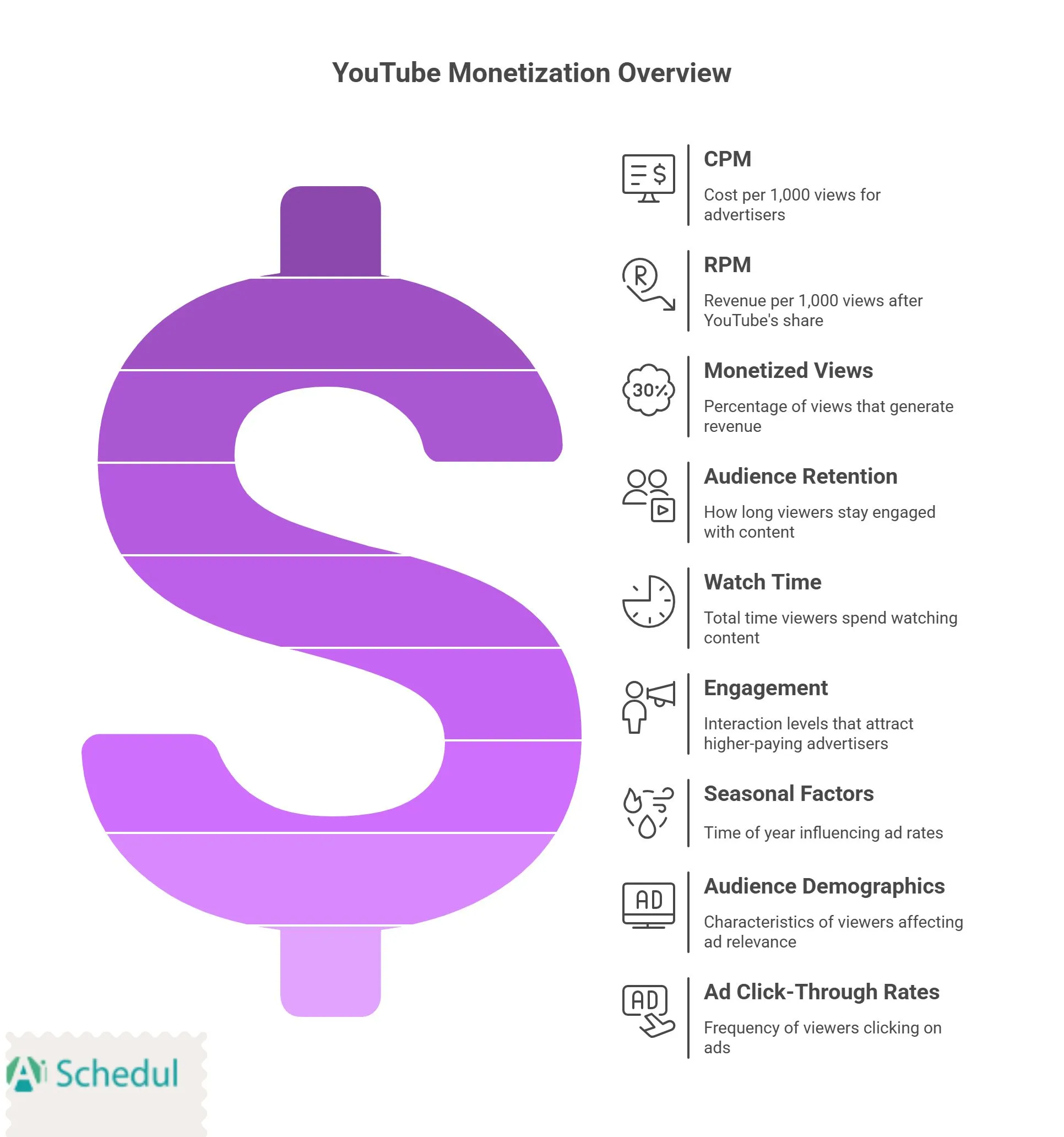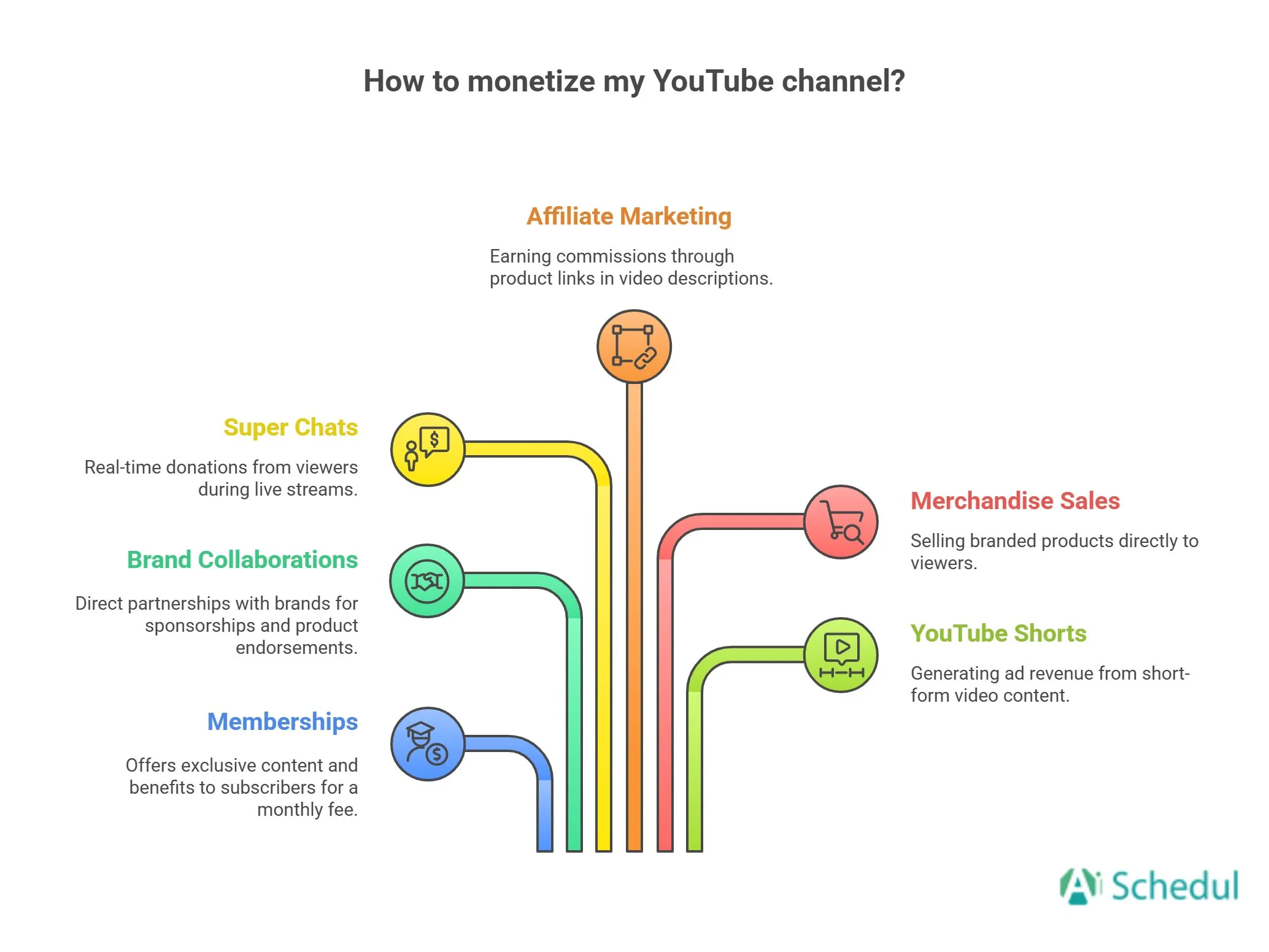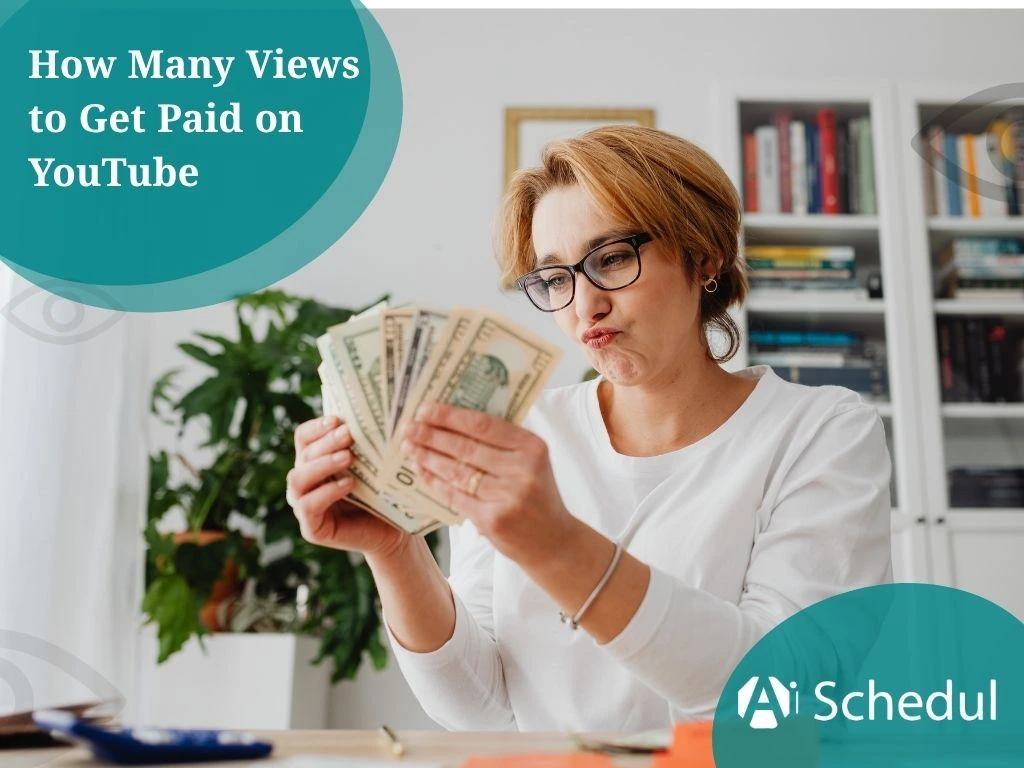YouTube has evolved from a website for sharing videos to one of the most engaging ways to earn money online. Everyone can be active on YouTube and convert their passion into real income. However, one main question that comes up regularly is how many views to get paid on YouTube?
Does YouTube pay for views? Should you focus on increasing your YouTube views, or are there any other factors to consider to earn money on this platform?
In this article, we will discuss everything you need to know about how profitable YouTube views are. You will learn about the basics, including the relationship between views and revenue, as well as several strategies for improving operational features. Let’s start.
Table of Contents
ToggleHow Does YouTube Pay-Per-View Work?
Let’s make a crucial point clear right away: You are not getting paid by YouTube for video views. You are paid for ad views.
To start earning through ads and your direct views, you must join the YouTube Partner Program (YPP), and you must first meet some YouTube monetization requirements:
- At least 500 subscribers.
- Three public uploads in the past 90 days,
- 3 million public YouTube Shorts views in the last 90 days or 3,000 public watch hours over the preceding 12 months.
Once eligible, enabling ads on your videos allows YouTube to place ads, and you get a share of that ad revenue. However, pure ad-based income can fluctuate and requires consistent content production and audience growth.
In general, YouTube keeps 45% of ad revenue while creators get 55%. Thus, the artist gets $5.50 if an advertiser pays $10 per 1,000 ad views (CPM). You can learn about CPM and other monetization factors later in the blog.
This is how earnings are impacted by ad type:
- Skippable ads: Only pay when viewed for more than 30 seconds.
- Non-skippable ads: Better earnings, higher CPM.
- Mid-roll ads: Only videos longer than 8 minutes are eligible for mid-roll ads, which pay when they are shown.

Strategies to Maximize Revenue from Views
Now that you know about how views on YouTube can be monetized, there are some strategies to make it more profitable. Let’s go through them and see how they affect your YouTube’s view monetization:

1. Create Longer Videos for More Mid-Roll Ads
As we mentioned before, mid-roll ads can be added to videos that are eight minutes or longer, boosting the possible amount of ad views and revenue. Longer viewing durations keep viewers interested and draw in more advertisers and profits.
2. Choose Higher-Paying Niches and Topics
This is a fact that premium advertisers who are paid more per ad view are drawn to certain niches. Here are some popular niches on YouTube:
- Reviews of technology,
- finance,
- Business,
- and health.
Creating material specifically for these subjects can increase ads and income possibilities.
3. Boost Viewer Engagement to Maximize Ad Impressions
Engaged audiences that watch videos completely or interact with them by leaving likes and comments can increase ad view rates, resulting in higher payouts. Use popular YouTube tags to gather more audience and start interacting with them as soon as possible.
What Are YouTube Monetization Metrics?
If you want to maximize your revenue streams, understanding the YouTube monetization system is crucial. Key performance indicators that show how much money is made for every 1,000 views are:
- CPM (cost per mille),
- RPM (revenue per mille).
So we have an RPM vs CPM YouTube situation.
- RPM provides a more accurate view of your real earnings after YouTube’s revenue share,
- whereas CPM calculates the advertiser’s payment rate.
The percentage of monetized views, audience retention, and watch time are further important indicators.
You must remember that high engagement draws in higher-paying advertisers. Additional factors that can affect your revenue include:
- The time of year,
- Audience demographics,
- Ad click-through rates.

Key Points for Making Money on YouTube with Views
Keep in mind that while you can make money on YouTube from views, it’s primarily about how those views translate into ad views and other indirect revenue sources. However, here are some takeaways for :
- Enable advertisements and sign up for the YouTube Partner Program to monetize your views.
- To boost ad impressions, produce longer, more interesting content in profitable niches like technology and health.
- Use alternative monetization methods like product sales, sponsorships, fan funding, and affiliate marketing alongside ad views.
- Create an engaging community, and interact with them directly to expand your revenue streams beyond just views.
Alternative Monetization Beyond Direct Views and Ads
As we mentioned before, the primary source of your view income for YouTubers is ad revenue, which is the money that advertisers pay YouTube to place advertisements before, during, or after videos.
However, there are many other ways to make money on YouTube. Let’s see what they are:

1. Memberships
YouTube allows creators with over 30,000 subscribers to charge their audience for memberships. For a monthly charge, viewers can become subscribers to a channel and receive benefits such as:
- Unique emojis and badges.
- Behind-the-scenes material.
- Special Q&A sessions or live streaming.
2. Brand Collaboration and Sponsorships
Sponsorships are another answer to “how many views on YouTube to make money?”. Creators collaborate directly with brands to market goods and services rather than depending on YouTube advertisements.
Even smaller creators can get sponsorships if they have a particular audience that businesses are interested in.
3. Super Chats Features
During live streams, fans can give money with Super Chats and Stickers, and their messages will be highlighted in the chat. Depending on the viewer’s donation amount, Super Chats stay pinned longer and display vibrant colors.
4. Affiliate Marketing
YouTubers can get paid through YouTube affiliate marketing each time a customer purchases a product after clicking on their link. This is ideal for tech, cosmetics, fitness, or any other specialty where consumers do their research before making a purchase.
5. Selling Your Own Merchandise
YouTube is great because you can make and market your own goods, such as:
- Accessories, hoodies, and t-shirts
- Digital goods like presets or e-books
- Items with a custom brand, such as stickers or water bottles
YouTube even provides a Merch Shelf, which lets you display goods right beneath your videos.
6. YouTube Shorts
YouTube has discontinued YouTube’s Short Funds. However, you can still make money with YouTube Shorts monetization. This is how ad revenue is generated:
- Every month, YouTube adds all ad revenue together.
- A Creator Pool is then created using this ad money. Your benefits are divided between the creative pool and the musician if they used music in a short. Otherwise, the Pool receives all of the financial gains.
- Your portion of the total YouTube Shorts views determines how much money you get.
- 45% of this allocation is yours to keep.
Conclusion
By now, we hope that you found the answer to “how many views to get paid on YouTube?” All you need is to start your channel and grow it to activate monetization. You’ll need 500 subscribers to join the YouTube Partner Program and 1,000 subscribers to get started with video advertising.
This must be your goal. Make sure to use every promotional strategy we covered above and never give up. Building a YouTube following takes time, but the effort is well worth it.
FAQs
1. How Many YouTube Views to Make $100?
To make $100, you generally need 20,000–100,000 views, depending on your CPM (Cost Per Mille) rate. For example, if your CPM is $5, you’d need around 20,000 monetized views.
2. How Do I Qualify for YouTube Monetization?
To join the YouTube Partner Program (YPP), you must have:
– 1,000 subscribers,
– 4,000 public watch hours in the past 12 months, or 10 million valid Shorts views in the past 90 days.-
3. Does YouTube Pay For Every View?
No. YouTube only pays for monetized views, which are views where ads are shown. Not everyone will see an ad, so total view count doesn’t equal paid views.
4. How Much Does YouTube Pay Per 1,000 Views?
It varies by niche and audience location, but on average:
– $0.25 – $4.00 per 1,000 views (after YouTube’s cut).
– High-paying niches like finance or tech can earn $10+ CPM.-
5. Do Views Directly Translate to Money?
No. YouTube pays creators based on ad views, not the number of video views. This means that even if a video gets millions of views, the creator only earns money when viewers watch the ads displayed on the video for at least 30 seconds or interact with them.
If ads are not enabled or viewers skip the ads, no revenue is generated from those views.

